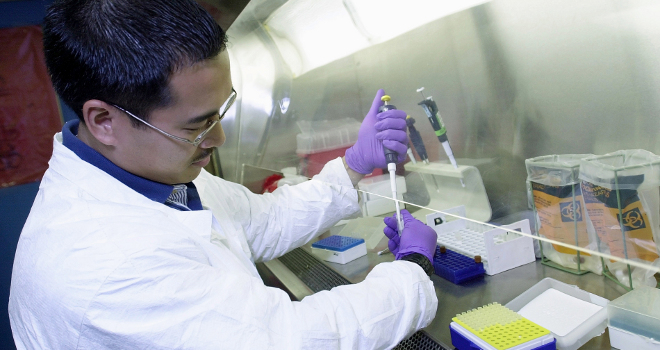The Naval Medical Research Center (NMRC) in Silver Spring, Maryland, quietly conducted a rapid-response exercise against two undisclosed bacterial and viral threats.
The study required a participating biotech company to synthesize drugs on short notice for two unknown biological warfare agents.
This exercise, which took place in June, was conducted in collaboration with the Joint Project Manager-Transformational Medical Technologies and the Defense Threat Reduction Agency–two government institutions specializing in countering weapons of mass destruction.
The exercise proved to the military officials that drugs to prevent a presumed new biowarfare threat could be synthesized within 18 days.
Government officials did not disclose the nature of the bacterial and viral targets that were used for the exercise. However, the bacteria was a gram-negative variety.
In the exercise, a biotechnology firm named AVI BioPharma was essentially tasked with creating drugs on the fly to treat the two biowarfare threats. The drugs were conceived, designed and manufactured within the 18 day period.
The Defense Threat Reduction Agency is one of a host of government entities that has been quietly working on biowarfare projects. In recent years, projects they have worked on which have been revealed to the public have included fabrics that can capture toxic gases and various preparations for a hypothetical flu pandemic.
One of their most interesting projects centers around a “one-size fits all” defense for a catastrophic biological weapon attack.
AVI spokesman Ian Stone gave Talking Points Memo a rundown of the biowarfare exercise at the NMRC.
“We continue to see the rise of new and tougher-to-treat infectious diseases,” he said. As a result, the government is looking for technologies that can rapidly turn around a highly-specific therapeutic when a threat emerges.”
He added: “A rapid response exercise is basically a test of how quickly we can create a therapeutic once a disease’s genetic sequence has been identified. The government wants to be certain that, no matter how complex or rare a threat may be, we can rapidly respond with a therapeutic candidate.”
So far, so good.
“To date, we have shown that we can meet the challenges and quickly develop therapeutic candidates to shut down emerging threats.”
In recent months, the Joint Project Manager-Transformational Medical Technologies has also worked on anti-pandemic projects involving potential ebola and dengue virus outbreaks as well.









